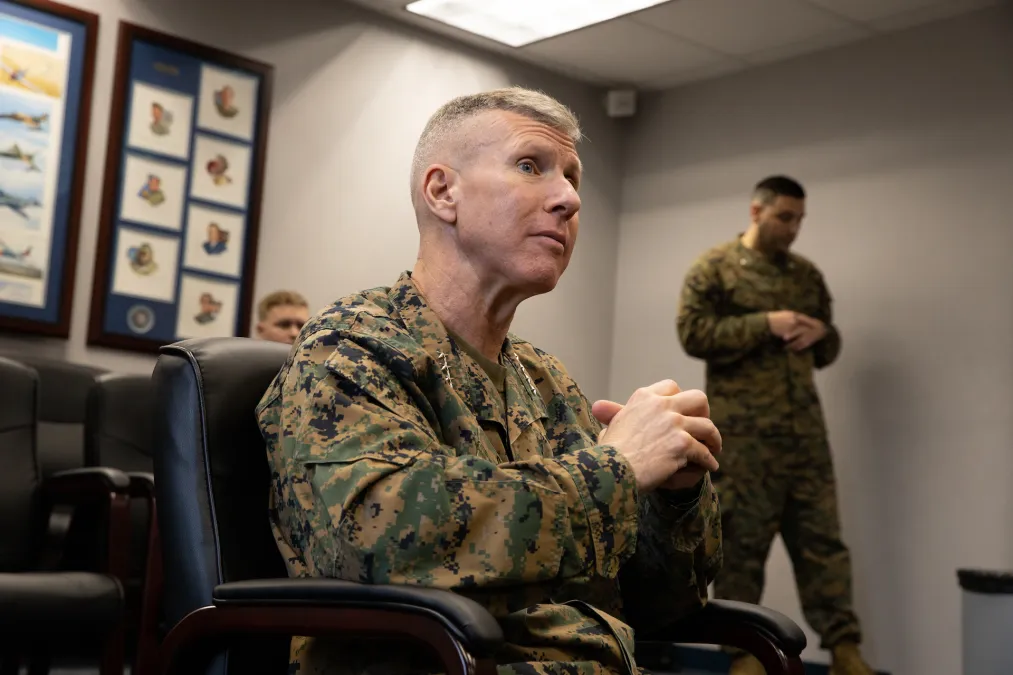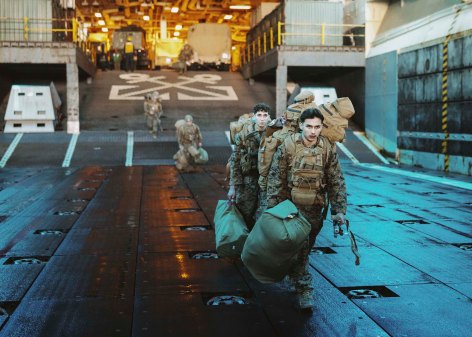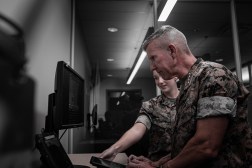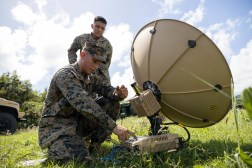Biden nominates Marine Gen. Eric Smith, Force Design 2030 advocate, to be next commandant

Gen. Eric Smith, currently serving as assistant commandant of the Marine Corps, has been selected by President Biden to take over the service’s top job when Gen. David Berger’s term comes to an end later this year.
The nomination was referred to the Senate Armed Services Committee on Tuesday, according to a notice posted on Congress.gov.
Smith has been a strong advocate for transforming the Marine Corps through a variety of initiatives including Force Design 2030, Talent Management 2030, and the “stand-in forces” concept.
Some of the Corps’ modernization initiatives, particular Force Design 2030, have been controversial and come under heavy criticism. That vision for the future force includes cutting tanks, artillery and other capabilities to free up money to invest in other systems that Berger and other service leaders believe will be more relevant in a potential conflict with China in the Indo-Pacific, such as long-range anti-ship missiles and unmanned platforms.
In an op-ed published in Proceedings last year, Smith noted that “skepticism about change endures.”
“Change is hard, particularly for those as bound to tradition as are U.S. Marines. But change is inevitable in the business of war,” he wrote. “There are roughly 80,000 Marines aligned to missions in the Pacific, with nearly 24,000 of them forward deployed or stationed in theater … They will fight tomorrow if a war begins, but without change, they will do so with decades-old tools and organizations that are not up to the standard of a peer conflict. This is not acceptable.”
He described “stand-in forces” as small units that are strategically placed in locations where they can “collect targeting data, strike to close choke points, or herd adversaries into areas where U.S. naval and joint forces can bring more weapons to bear.”
“These light, highly mobile forces have capabilities that will force an adversary to deal with a unit that previously would have been too small to care about. They can persist independently for days if needed and can reposition with organic mobility assets to avoid being targeted. Their physical and electromagnetic signatures are so low they are not easily detected, and if detected, they possess the lethality to fight,” he wrote.
Smith has also touted the benefits of new long-range weapons — such as the Naval Strike Missile — and unmanned platforms.
“Longer-range fires is better” than traditional artillery, he said during an event at the Center for Strategic and International Studies last year. “You want to be able to outstick your adversary.”
He has also highlighted the vulnerability of tanks in modern warfare.
“Armor has a purpose — to kill other armor, primarily. And when the tank main gun goes around 4,000 yards and we can kill it with a drone at 90,000 yards, then you probably don’t want to be sitting at a tank,” he said at CSIS.
The Marine Corps and the Defense Department writ large also need to leverage artificial intelligence to aid targeting and implementation of the Pentagon’s Joint All-Domain Command and Control (JADC2) warfighting concept, according to Smith.
“Now it’s a matter of using the algorithms that connect what you see to joint all-domain command and control … so that every sensor is fused to then provide that intelligence, that target-quality data, to the best possible shooter,” he said.
Despite criticism, including from retired senior Marine Corps officers, Smith said the service needs to move quickly with force design and force development changes to counter China.
“We’re gonna keep going as fast as we can go because … China is the pacing threat,” he said at the annual Defense News Conference last year. “You prep for the worst-case scenario. I mean, that’s what we get paid to do. So that is what we’re doing with force design.”
A veteran of the Afghanistan and Iraq wars, Smith has served in the Corps for more than 35 years, having been commissioned in 1987 after graduating from Texas A&M, according to his official Marine Corps biography.
His commands have included Weapons Company, 2nd Battalion, 2nd Marine Regiment; 1st Battalion, 5th Marine Regiment; and 8th Marine Regiment/ Regimental Combat Team 8.
He has also led U.S. Marine Corps Forces Southern Command, 1st Marine Division, III Marine Expeditionary Force, and Marine Corps Combat Development Command.
Staff assignments have included director of the capability development directorate, combat development and integration; senior military assistant to the deputy secretary of defense and secretary of defense; and deputy commandant for combat development and integration.
Both Smith and Berger declined to comment on the nomination.
It wasn’t immediately clear when the Senate Armed Services Committee might hold a confirmation hearing for Smith.
Retired Marine Col. Mark Cancian, a senior adviser with the CSIS International Security Program who served as an infantry, artillery and civil affairs officer during his career in the Corps, said he expects the Senate will confirm Smith’s nomination.
“Is there going to be any pushback from Congress? … I think for the most part, the answer is ‘no.’ I think they’ve got a lot of support, but there will be a couple of members — some of them, you know, I think will ask tough questions. But I think he’ll get through, but … there will be a little dissent,” Cancian told DefenseScoop.
He noted that rhetorically, Smith has been “fully behind” Force Design 2030.
“He has been Berger’s surrogate [on this], so if anyone were going to carry it on, I think it would be Smith. You know, that said, he’s not Berger and he has latitude to make some changes if he wanted to coming in. I mean, I wouldn’t expect him to make really radical changes, of course, but he might do some things to tamp down the civil war in the Marine Corps, you know, to do some things that might take the edge off of the retired generals’ complaints,” Cancian said.
Bringing back “some sort of armored capability” and cannon artillery could potentially mollify dissenters, according to Cancian.
“On the other hand, … he could just sort of say, ‘You know, we’re going to sail on’” with the plans for Force Design 2030, Cancian added. “If he wanted to stick it out and just beat the [critics and retired] generals, he could probably do that.”
Updated on May 31, 2023, at 4:25 PM. This story has been updated to include comments from Mark Cancian.






